Understanding Concussions
A concussion is a type of traumatic brain injury caused by a blow, bump, or jolt to the head or body that shakes the brain inside the skull. Although not life-threatening, concussions can have serious effects on brain function.
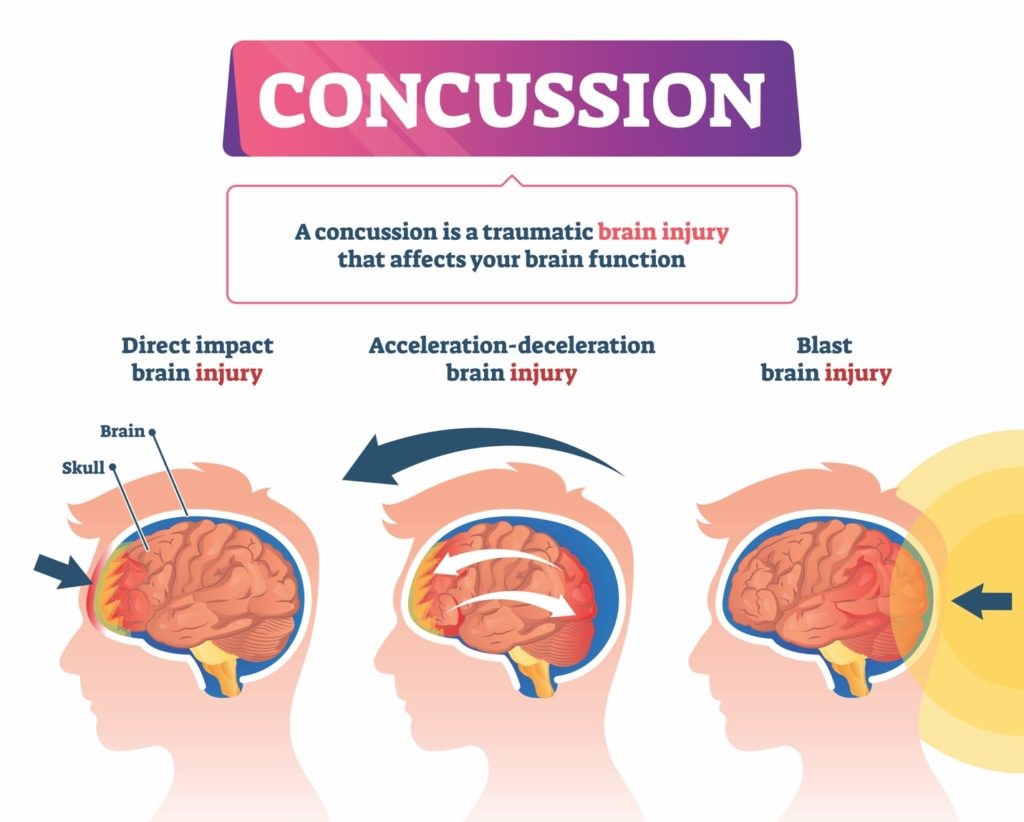
Scientific Investigation on Headgear and Concussions
Research on the effectiveness of headgear in concussion prevention has been a prominent topic in the scientific community. A comprehensive study from the National Center for Biotechnology Information indicates that while certain types of headgear can reduce impact force, their efficacy in preventing concussions remains inconclusive.
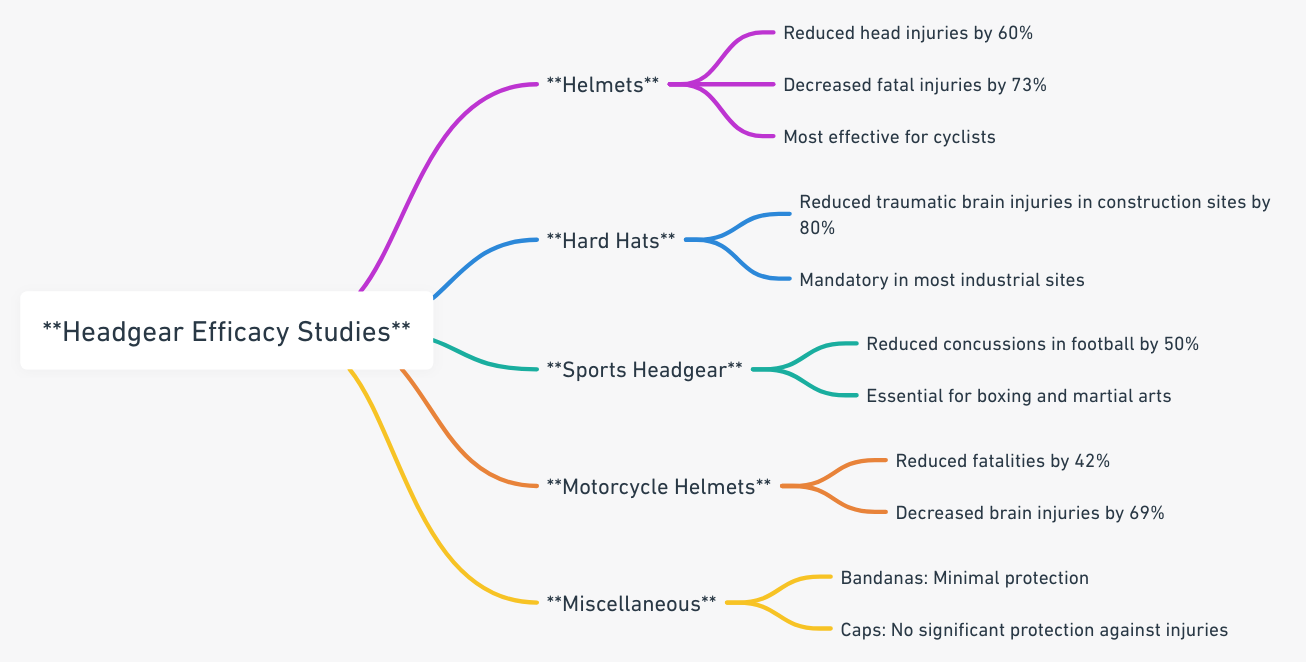
Analyzing Results and Conclusions
Many studies have found mixed results, with some suggesting headgear may decrease the risk of superficial injuries but not necessarily concussions. The Journal of Athletic Training highlights these conflicting findings.
Causes and Symptoms of Concussions
Concussions are commonly caused by falls, sports injuries, car accidents, and physical fights. Symptoms can range from headaches, confusion, dizziness, to loss of consciousness. These symptoms can last for several days or even longer.
Long-Term Effects of Multiple Concussions
Multiple concussions can lead to chronic traumatic encephalopathy (CTE), a brain degeneration likely caused by repeated head traumas. Symptoms of CTE include memory loss, confusion, and, in severe cases, progressive dementia.
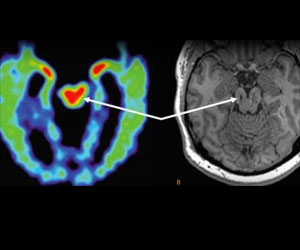
The Pivotal Role of Headgear Across Different Fields
While their styles and designs may differ, headgear serves a critical function in various domains, primarily offering protection. In the sports world, for instance, athletes in football, boxing, and hockey frequently rely on headgear to shield against injuries. [Image Placeholder]
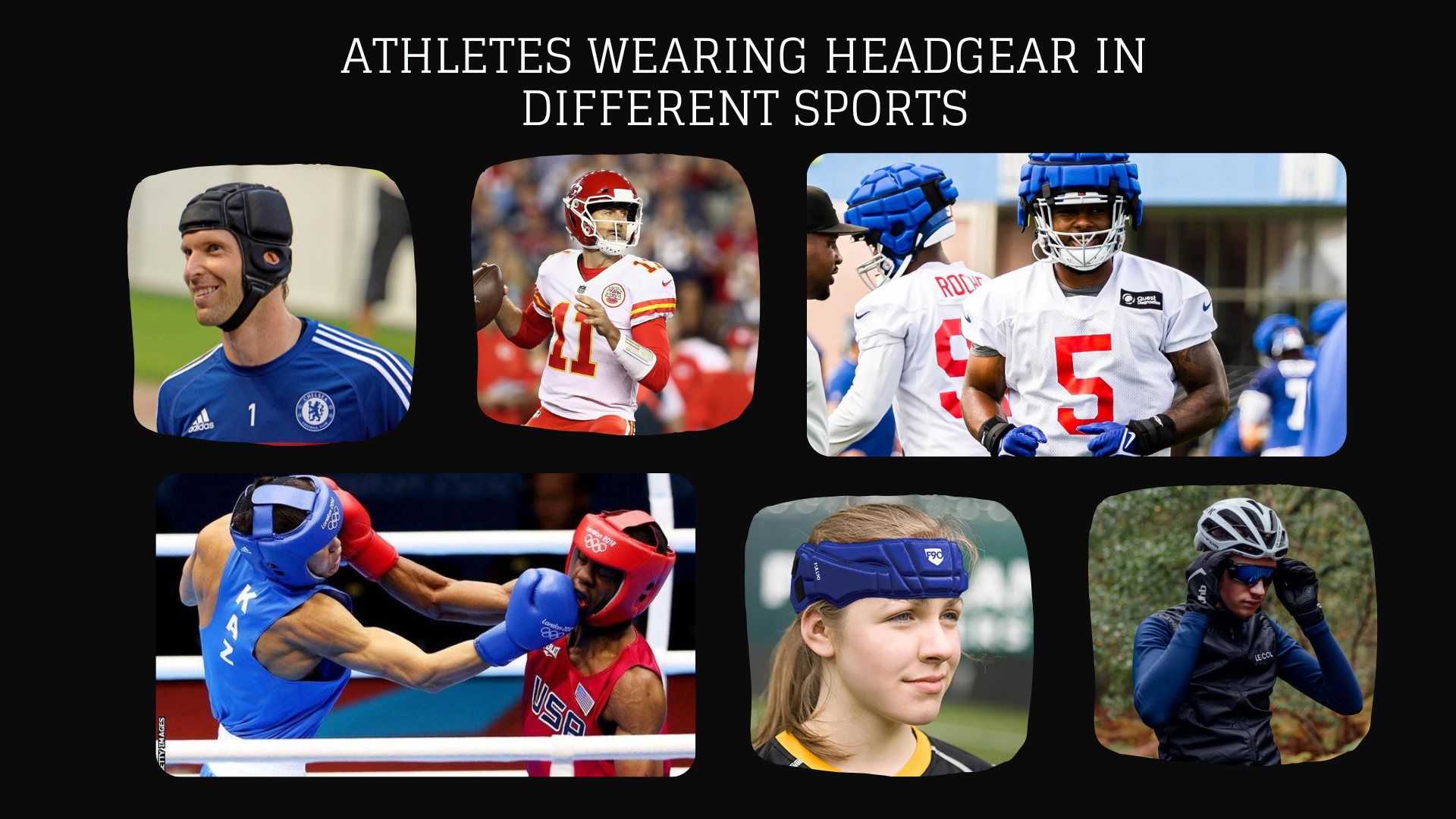
The Life-Saving Helmets in Motorcycling and Cycling
The importance of helmets when cycling or motorcycling can’t be overstated. According to the National Highway Traffic Safety Administration, helmets are about 37% effective in preventing motorcycle deaths and about 67% effective in preventing brain injuries.

Hard Hats: The Shield of the Construction Industry
In hazardous work environments like the construction sector, hard hats are an essential safety measure. The Occupational Safety and Health Administration mandates their use to protect employees from head injuries due to falling or flying objects. [Image Placeholder]

The Design and Function of Headgear
The design and function of headgear vary greatly across fields, but all are primarily intended to protect the user’s head. The materials used in making headgear – like ABS plastic, carbon fiber, and even metal alloys – are chosen for their strength and impact resistance. These materials are engineered to absorb or deflect the force of impacts, reducing the risk of head injuries. (source)
Design Elements and Protective Function
Design elements such as padding, shape, and construction also contribute to the protective function of headgear. Padding helps to absorb shocks, while the shape and construction of headgear distribute the impact force over a wider area. (source)
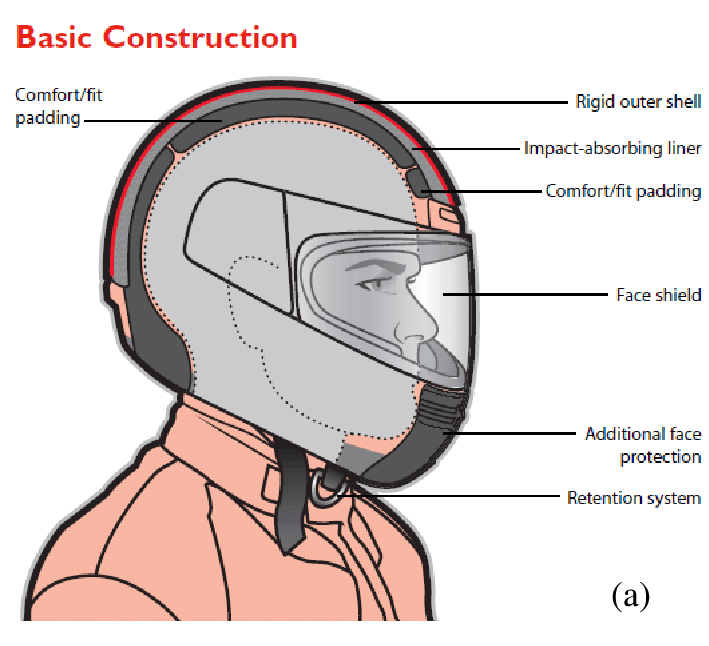
Certifications and Standards
There are many certifications and standards for headgear across various fields. These may include standards for sports helmets like NOCSAE in the US, industrial safety helmets like ANSI, or motorcycle helmets like DOT and Snell. These certifications ensure the headgear meets certain safety requirements.(source)
Limitations and Areas for Further Research
Several limitations exist in current research, including variations in headgear types and testing methodologies. Many studies propose further investigation into the biomechanics of concussions, and how different headgear might influence these. The Centers for Disease Control and Prevention provides more information on this topic.
The Controversy Around Headgear and Concussion Protection
The debate around the use of headgear in preventing concussions has gained tremendous traction over the years. Critics argue that the effectiveness of headgear is limited, pointing to studies that suggest headgear does not significantly reduce the risk of concussions. However, proponents of mandatory headgear usage cite research indicating that headgear can reduce the impact force of blows to the head, potentially mitigating the risk of brain injuries.
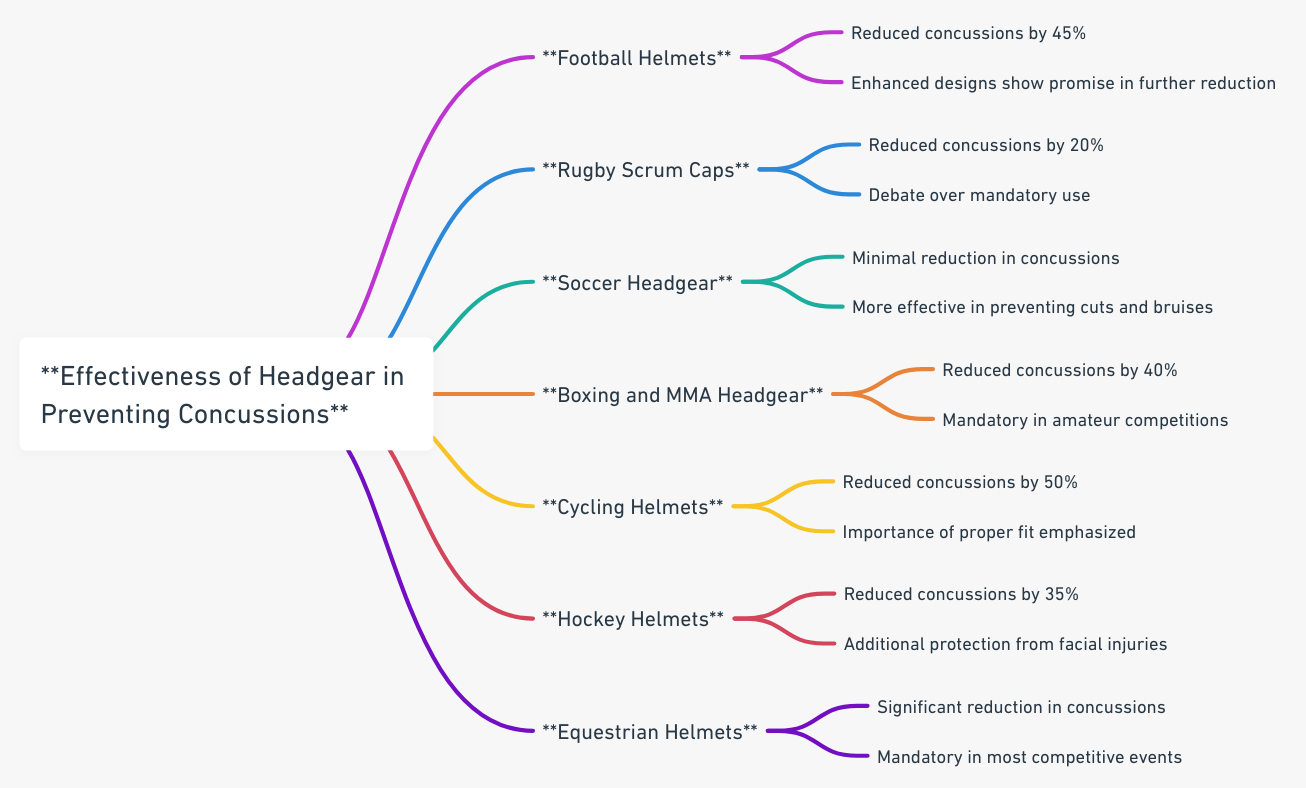
Impact of Debates on Headgear Policies and Regulations
These ongoing debates have significantly influenced policies and regulations related to headgear use. Some sports organizations, like the FIFA and USA Hockey, have made headgear mandatory, citing player safety. Conversely, other organizations believe that making headgear mandatory may give a false sense of security and increase the risk of reckless behavior.
Understanding the arguments for and against the use of headgear is crucial, and the decision to use it should be guided by personal context, sport type, and the latest scientific research.
Recommend the addition of an infographic that provides a visual representation of the different sports organizations and their stance on mandatory headgear usage.
Concussion in American Football
Whilst you might expect it the big men of football, the O-line and D-line players that crunch into each other at the scrimmage are more likely to experience concussion injuries – this is not the case. Concussions are experienced in far higher proportions by cornerbacks, wide receivers, and linebackers. These are the players who are most likely running at full pace, who are then colliding with other players also moving at pace. The result? A sudden stop, and/or violent shaking of the brain.
The big guys? They are 1 step apart, and whilst they are hit with the force that big men hit with. the collision high speed, and fast stop. Compare this to the impact felt by the brain of a wide receiver tearing down the field to complete a play who is met head-on by the defence with their run coming to a very fast stop.
Expert Opinions on Headgear and Concussion Prevention
As the debate continues on the effectiveness of headgear in concussion prevention, various professionals from medical, sports safety and headgear design backgrounds offer valuable insights. Studies reveal that while headgear can mitigate the impact, it cannot completely prevent concussions.
Medical professionals stress that concussions occur due to the brain moving inside the skull, something a helmet cannot prevent. However, sports safety experts argue that headgear can lessen the severity of impacts and potentially reduce the likelihood of severe brain injury.
Consensus on the Role of Headgear in Concussion Prevention
While there is no unanimous agreement, the consensus leans towards the stance that headgear, while not completely preventing concussions, plays a significant role in reducing their severity. Experts in headgear design and manufacturing are continually innovating to improve protection levels. They emphasize the importance of proper fit and material in optimizing the effectiveness of headgear.
Thus, wearing headgear is a crucial preventive measure, but it doesn’t replace the need for safe sporting practices and concussion education.
Alternatives and Complementary Measures to Headgear for Concussion Prevention
In addition to the use of headgear, there exist alternative strategies for concussion prevention. A prominent measure includes the implementation of safer rules in sports and at worksites. The CDC emphasizes that rule changes can have a significant impact on reducing the risk of concussion.
Moreover, the importance of proper technique and awareness cannot be understated. This involves being conscious of how one’s actions could lead to potential harm, and adjusting accordingly. The Mayo Clinic suggests that having a clear understanding of the game or work-related tasks can mitigate risks.
Physical conditioning and strength training also play a crucial role in concussion prevention. By improving neck strength and flexibility, individuals can better withstand impacts that could potentially cause a concussion.
Is Headgear Enough?
While headgear does provide some protection, it cannot fully prevent concussions. This is due to the nature of concussions, which are caused by the brain moving within the skull. Thus, a multi-faceted approach, combining proper techniques, physical conditioning, and safe practices, is necessary to effectively prevent concussions.
Conclusion: Making an Informed Decision About Headgear Use
Without question, headgear protects the skull from trauma. Headgear is thus an essential protector in sports such as cycling, ice hockey, rock climbing and in jobs such as construction where the risk of traumatic head injury is high due to accidents.
Headgear also reduces damage from repeated shocks and shaking, such as those experienced by footballers and boxers. But if this protection was complete – well, no footballers would experience a concussion, which we know is not the case. Headgear is simply unable to protect the brain from shaking, or sudden stop injuries as the injury to the brain can occur with no injury to the skull itself. That there are repetitive use concussion injuries in sports such as soccer, especially in younger children makes it clear that simple protection of the skull is not enough to protect the brain.
In the end – it’s the athlete’s choice, but the choice should be informed especially in youth players. Headgear limits the chances and impact of concussion injuries, but does not remove it. The nature of particular positions in some sports, makes concussions a near inevitable part of those games. Any head injury, regardless of how slight, should be documented and investigated with your primary health provider.

Dr. Martha Pyron is a recognized sports medicine physician and the founder of Medicine in Motion, an Austin-based practice specializing in comprehensive medical care for active individuals and athletes. An active contributor to her field, she uses her extensive experience as a former collegiate athlete to aid her patients and develop innovative care strategies. Beyond her clinical practice, Dr. Pyron is known for her involvement in the local athletic community and her commitment to promoting health and fitness.



